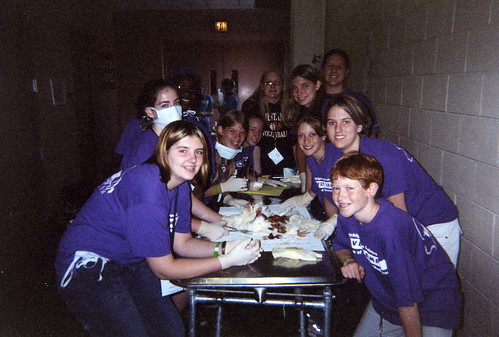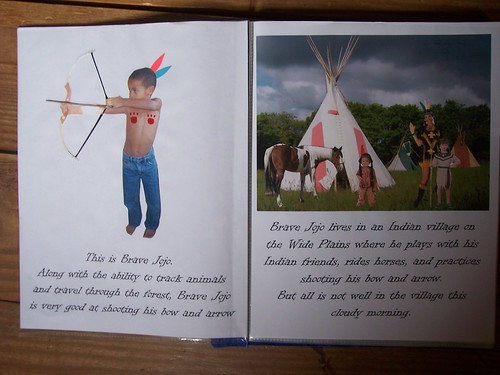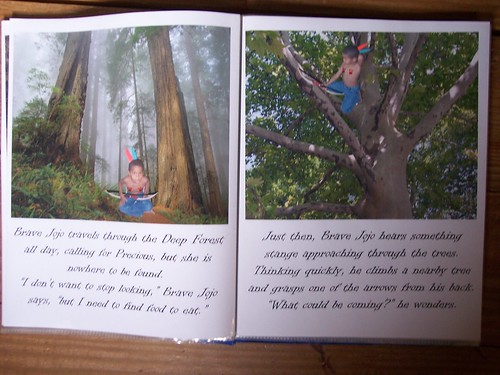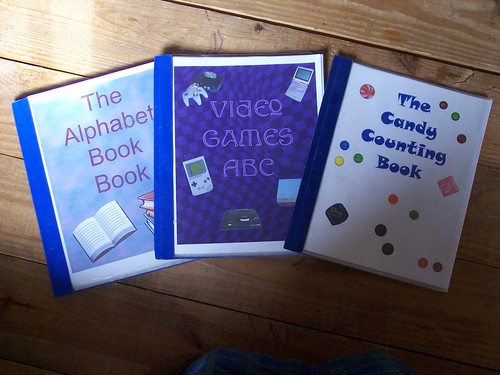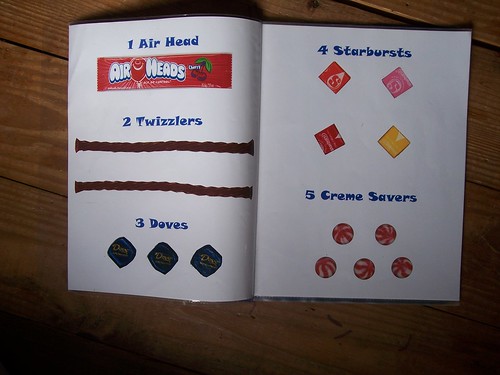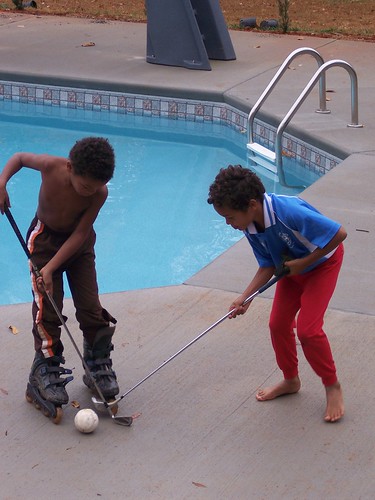A question came up on my Homeschooling Creatively list about sleep pattern differences. One of the “temperament traits” of a right-brained learner is that they are almost always night owls. From the responses given to the original question, my yahoo list is full of these right-brained night owls. Further, in the autism spectrum world, extreme sleep pattern differences is also the “norm”. The theory by Jeffrey Freed in his book, “Right-Brained Children in a Left-Brained World”, is that autism spectrum is a form of “extreme right-brainedness”. For those on the high functioning end of autism (Asperger’s and High Functioning Autism), I often say, “take the traits and learning style of the right-brained learner and add a plus to everything, and that’s what you are dealing with.” An example: a right-brained learner often resists trying new things initially. For a HFA/AS person, they resist new things to a higher degree.
All of this said, this post will resonate with those with children like mine. For the rest of you, it might seem extraordinary and strange, but in the world of the right-brained learner and autism, it’s perfectly “normal”. And my take is that if something is “normal” for a third of the population or more, then is it really abnormal, or really normal in its realm?
First, let me break down the two styles of sleepers in my family. I have three children who are “regular night owls”, and we two parents fall into this category as well. And I have four children who are “extreme night owls”. A regular night owl tends to shoot for their bedtime around midnight, and falls asleep fairly easily. They tend to need between the typical 8-10 hours of sleep each night. If they don’t get enough sleep one night, they tend to want to go to bed earlier the next evening, or sleep in later, to “catch up” on their sleep. In other words, you notice when they don’t get enough sleep by an adjustment in their sleep patterns temporarily.
On the other hand, extreme night owls tend to have a difficult time falling asleep, taking anywhere from 1-3 hours to do so, especially if they go to sleep before their natural circadian rhythm indicates. It is tougher to find their natural sleep rhythms naturally; I find that we had to experiment with what works best, and for how long, until it worked well for them; the test being that falling asleep came more easily (even if with help through something like melatonin), and that awaking came more easily, and they weren’t tired throughout the day. I found that when left to their own haphazard sleep schedule, bedtime routines were all over the place (one night at 2:00 a.m., the next at 4:00 a.m., the next at 1:00 a.m.), or sleep/wake cycles became flipped (having to stay awake all night and day to flip back or sleeping night and day to flip back to sleeping at night and being awake during the day), and that it affected their behaviors (feeling tired throughout the day or aggravating temperament differences like depression, anxiety or mood swings). To take further note, getting them up earlier, or at a consistent time (outside of their optimal), when they went to sleep late to help them get a better sleep pattern did not work. They would still stay up late, but their behaviors would skyrocket as their bodies reacted.
So, what do I do? I do what works for the individual and family collaboratively. First, there are some societal conditionings that I came to terms with in order for it to work best for each. The shoulds are: early to bed; early to rise; this adage came about during the pre-electricity era. Our natural circadian rhythms reflected the rising and falling of the sun and so there was nothing to interfere with that working well for most people. However, with the advent of man-made light, it has changed our circadian rhythms indefinitely. This is why when there are severe sleep differences, the understanding of the way our body responds to its environment is important to understand. For instance, my son who is battling depression and has severe sleep differences needed to change his sleeping quarters from the basement where there was no natural light into an upstairs bedroom with four windows and plenty of natural light to assist in many areas of need.
The next should tends to revolve around the same type of thing, but has more connection to our workforce and schooling practices: Getting to bed in order to get the “proper amount of sleep” of 8 hours backward from when you need to awaken for our cultural practices of the former, usually needing to awaken at 6:00-7:00 a.m. in order to arrive to our designated places. For instance, in our church, we have a program called “early morning seminary” for our high school students. Each high school student will gather together either at our church or someone’s house in a central location to study the scriptures together before going to school in order to start their day off right. In order to accomplish this, it often begins at 6:00 a.m. Those of my children who are your “regular night owls”, could adjust to this request, certainly still with sacrifice like everyone else, but doable. Those of my children who are “extreme night owls”, this was a nearly impossible request that physically negatively impacted them. Another program in our church is for our young men to serve 2 year missions from ages 19-21 years. There is a strict sleep pattern schedule of bedtime at 10:30 p.m. and wake up at 6:30 a.m. As much as my oldest son desired to adhere to this structure, his body would not allow it. It is with the extreme night owls that “willpower” is often not enough. So, basically, an extreme night owl will lie awake in bed for hours (as will even a regular night owl) when placed in bed at 8:00 p.m. in order to “get enough sleep” as a child, and it just messes with their self-image and adds to the behaviors and tiredness because of it not aligning with their particular sleep rhythms, not the actual quantity of sleep. In other words, quantity of sleep only benefits when coupled with optimal sleep timing.
Last, the other should I can think of that I had to analyze is the idea of parents creating authority over their children. My understanding and experience as a child with this is that parents create the structure of the children throughout the day, and decide when bedtime is to be for “their own good”, as well as making sure the parents get a “break” from their parenting job during the day in order to get their “alone time” during the evening hours. The problem I saw in this as I had originally tried to adhere to this “normal” expectation of a parent with their children as it pertains to bedtimes is that it would negatively impact my relationship with them. For instance, in order to get a night owl child, and especially an extreme night owl child, to go to bed when they weren’t naturally ready was to either yell at them, punish them, get aggravated with them for constantly goofing off or coming out, and overall just become more tired with the struggle of getting them to bed to get “my time”. By the time “my time” came, I was exhausted from the battle. I quickly realized it wasn’t worth it. It also helped for me to think about my own childhood and the times I just couldn’t fall asleep. When I was “goofing off”, etc., I wasn’t doing it to be “defiant”, but because I just wasn’t tired. I gave that same respect to my children and decided to view it differently; well, view it from what it really was: a child that wasn’t tired.
Alright, so the scene is set to share what works for us this day, with the children I have. All of the knowledge I have gained above has come through experience, experimentation, contemplation, and collaboration to get where we are today. What that means is that what I learned from the first few children have benefited the subsequent children, who have had to experience less difficulty from not knowing how to establish their preferred sleeping patterns. I know better now how to recognize the nonverbal sleep needs of my younger children and the pre-“know-how-to-verbalize” adolescent sleep shifts of my early teenagers. I hope something can help those of you with similar children.
My 17 year old son and my 19 year old daughter are two of my “regular night owl” children. My 19 year old puts herself to bed by midnight and wakes herself up at 8:30 a.m. in order to be ready for work at 9:30 a.m. My 17 year old puts himself to bed around 10:00 p.m. because he is still in the seminary program and has to wake up, which he does on his own, at 6:00 a.m. to be to his class at 6:30 a.m. My other “regular night owl” is my just-turned-8-year-old son. We try to have him going to bed around 10:00 p.m., which works for him for the most part. He wakes up anywhere between 8:30 a.m. and 10:00 a.m.
Men, experiencing male pattern hop over to these guys generico cialis on line hair thinning, usually are recommended a scientifically established dental medicine called Propecia.
As for my four “extreme night owls”, I’ll begin with my youngest two first, because they benefited from what I learned from the others, so it is fairly straight forward for them. My 9 year old takes 1-2 hours to fall asleep, but usually it is only about the 1 hour if put to bed at his optimal time. We put his 8-year-old brother to bed first because he falls asleep more quickly (thus, more of a “regular night owl”), and have the 9-year-old play in our large walk in closet for about a half hour. Then, he goes into bed when the other is asleep and it usually takes him anywhere from the 30 minutes to the hour to fall asleep himself. I allow this timeframe to fall asleep at this age because I don’t want to do the chemical help until it gets further along, which usually happens around puberty.
So, that leads to my just-about-to-turn-14-year-old pubiescent son. He used to do a similar sleep pattern as the 9-year-old before puberty, but around 11-12 years old, it was time for his shift. First, I take into account how his sleep pattern affects others. With nine people in our house, people share bedroom space typically. He is one of those in the basement with two others, without walls for the most part. At the time of his shift, one person who slept down with him had to get up for seminary, and the other wanted to tackle his sleep pattern differences, and needed everyone to be asleep before he could accomplish his needs. That, factoring in that the 14 year old (then 12 year old) was having a more difficult time falling asleep (now creeping into the 1-3 hour timeframe), it was time to figure out what he needed to have a more easy sleep transition, both in figuring out his optimal time, and what he may need to help him do so. Midnight seems to be a good time to work toward, and with the addition of melatonin a year later, he is easily able to accomplish this and fall asleep within about 30 minutes. He wakes up at 9:30 a.m. in order to receive “therapy” for his autism needs, which works for him well right now, though when this need shifts, maybe 10:00 a.m. to noon until puberty passes and then 10:00 a.m. thereafter will probably be a good fit for him.
My oldest 21-year-old son has been the one who has taught me the most, and naturally, being the first and oldest, has had to go through the difficult learning curve of figuring this all out (his younger siblings have a lot to thank him for someday). He has done all that I outlined above to help us know what doesn’t work. He started off like his younger siblings: at around 5 years old or so, he would go to his room to do quiet activities at the same time hubby and I did . . . around 8:00 p.m., and then it was “to bed, to bed time” at around 10:00 p.m. (again, when hubby and I went to bed). Then, around 8-9 years old, he would be up until around 11:00 p.m. And then it crept to midnight, etc. until puberty. This is the timeframe I didn’t understand about the rhythms of my children/extreme night owls, so he went through a lot of rhythms, my expecting them to even out over time, but they didn’t. He did the early/mid/late sleep pattern shifts, he did the go-all-the-way-around-the-clock even-it-back-up corrections, he tried to go to bed earlier in order to be able to wake up easier for the early morning activities he desired to attend, he tried different alarms in order to awaken more easily, etc. Depression began around 16 years old, and anxiety hit as he tried to navigate the mission structure at 20 years old.
It was only just before that time, at 19 years old, that I figured out the melatonin connection and worked that into his repertoire. And, over the past year, I finally put together the tired factor and the behavior factor. First, he came home from his mission after 11 months because he needed to be treated for sleep apnea as an answer to his extraordinary tiredness he was experiencing his entire mission. However, upon getting and trying the C-PAP machine, it didn’t change anything for him. His behaviors continued to escalate as did his anxiety and depression. Once bottom was hit, I decided to really push the sleep pattern needs. This is when he came up from the basement dungeon into the lighted room, as well as committing to going to bed at midnight, with the help of melatonin (and my company), and experimenting with when to awaken (10:00 a.m. seemed to be optimal). His tiredness all but disappeared, but when he slips in his poor sleep pattern, the tiredness returns with a vengeance. Also, when he sticks to this sleep pattern, his depression and anxiety are more manageable, and thus, less manageable when he slips.
Last but not least is my 16-year-old son with moderate autism. He gets a class of his own because he is not able to reason his needs with his sleep differences. So, I have to work with him, and use his autism behaviors to my advantage. He enjoys routines, so once I am able to ascertain a sleep pattern that works for him, and me, then I can use timeframes to help him be independent with it. He is one of the few children with his own room (the oldest has his own now, too, because of his depression battle needs) because of his high need for alone time, and his sleep differences. On the other hand, regardless of what the stereotype of autism is, this son seeks out those who understand him. True, he ignores most people because he knows they don’t understand his differences of perspective. But, those of us who get it, he seeks us out constantly. My hubby, myself, and my daughter are his favorites. Also, anyone who does “therapy” with him will be someone who “gets” him, so he will seek them out. So, my bedroom is one of the places he will hang out during the day. He comes down into the greater area periodically throughout the day, and enjoys being outside from time to time on his own or with the animals.
That said, he comes downstairs at 11:00 p.m. (exactly, you know, because he watches the clock as it gets closer, and he will come to me and declare, “Mom, it’s 11:00!” . . . that’s autism, and it can work in your favor . . . I simply respond, “Yep!”) This is when he does his computer time. He loves YouTube, though with his recent added awareness of negative sites, yet lack of awareness of the negative impact, I may need to get him his own playlist (a father of a son with autism created this awesome site that a person can create playlists for your children in order to help keep them from the junk that is available on YouTube, but still enjoy the great stuff there, too). Anyway, then at 2:00 a.m., he comes to me wherever I am (sometimes I may still be awake with my oldest; mostly not if he is where he needs to be; so usually I am in bed), and he declares to me, “Mom, it’s 2:01” or whatever near 2:00 a.m. time it is, and I respond, “Yep!” He then goes to his bedroom. At 4:00 a.m., he comes to me in bed and states, “Mom, it’s 4:00!” and I respond, “Yep!”, and then he says, “Go potty,” and I say, “ah-huh”, and he does so. He states the time again when he comes out (maybe a half hour or so . . . he’s still a guy, even with autism . . . LOL!), I give him his melatonin, he crawls in bed with my hubby and I in our king-sized bed, and he proceeds to fall asleep within about 30-60 minutes. (He began to sleep with us when his puberty sleep schedule shifted around 12-13 years old . . . it works for everyone since I know where he is, and he seems to need our connection during sleep . . . patterns have changed over the years since then; this one has worked for the past year.)
So, what does this mean for poor mom’s sleep schedule? It all depends. Hubby helps put the younger ones to bed. Oldest son needs me as he works through his depression, and falling asleep is the hardest time for him emotionally, so I stay with him until around 1:00 a.m. and he is asleep. I then crawl into bed, get the 2:00 a.m. call, the 4:00 a.m. call, the 4:30 a.m. call, the autism humming and shifting in bed until he falls asleep, and then I awake with the littles around 9:00 a.m. It is certainly not optimal for my sleep, but the Lord seems to bless me with the capacity to do so as I support the needs of each family member. I’ve also become accustomed to it all. Abnormal is normal for me. And I know it won’t be forever. And even though I get my “clock calls” throughout the night, he is independent, so I can keep on sleeping. And I hope depression will recede over time where I can go to bed at my typical 11:00-midnight timeframe.
Most important, though, is that my relationships are strong with each child. Late nights have been some of the best connecting moments with some of my extreme night owls. And showing respect for who each child is based on this one aspect of their physical needs impacts their emotional and mental lives more than is realized. But, above all, it impacts their own self-image and our relationship foundation. When everyone finds what works for them as individuals, and functions well as a whole in the family, our interactions are strengthened and their lives are in balance. Frankly, I have found that establishing optimal sleep patterns for each person establishes a smooth overall daily rhythm for the entire home. It’s definitely worth figuring out. Thank goodness for the flexibility of homeschooling!

